【人工智能】卷积神经网络
用CNN实现离散数据的分类(以图像分类为例子)
感受野
感受野(Receptive Field):卷积神经网络各输出特征图中的每个像素点,在原始输入图片上映射区域的大小
全零填充
目的:希望卷积计算保持输入特征图的尺寸不变
卷积输出特征图维度的计算公式

使用全零填充 padding = "SAME"
不使用全零填充 padding = "VALID"
TF描述卷积层
tf.keras.layers.Conv2D(
filters = 卷积个数,
kernel_size = 卷积核尺寸, # 正方形写 核长整数 或 (核高h,核宽w)
strides = 滑动步长,# 横纵向相同写 步长整数 或 (纵向步长h,横向步长w),默认1
padding = "same" or "valid" # 默认valid,不使用全零填充。
activation = "relu" or "signmoid" or "tanh" or "softmax" 等 # 如果有BN此处不写
input_shape = (高、宽、通道数) # 输入特征图维度,可省略
)
批标准化(BN)
批标准化(Batch Normalization)
- 标准化:使数据符合0均值,1为标准差的分布
- 批标准化:对一小批数据(batch),做标准化处理
批标准化后,第k个卷积核的输出特征图(feature map)中第i个像素点
可以通过下面式子计算批标准化后的输出特征图
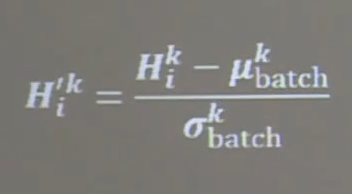
H'表示第k个卷积核,输出特征图中的第i个像素点
批标准化操作会让每个像素点进行减=均值除以标准差的自更新计算,对于第k个卷积核,batch张输出特征图中,所有数值的平均值和标准差

BN为每个卷积核引入可训练参数γ和β,调整批归一化的力度
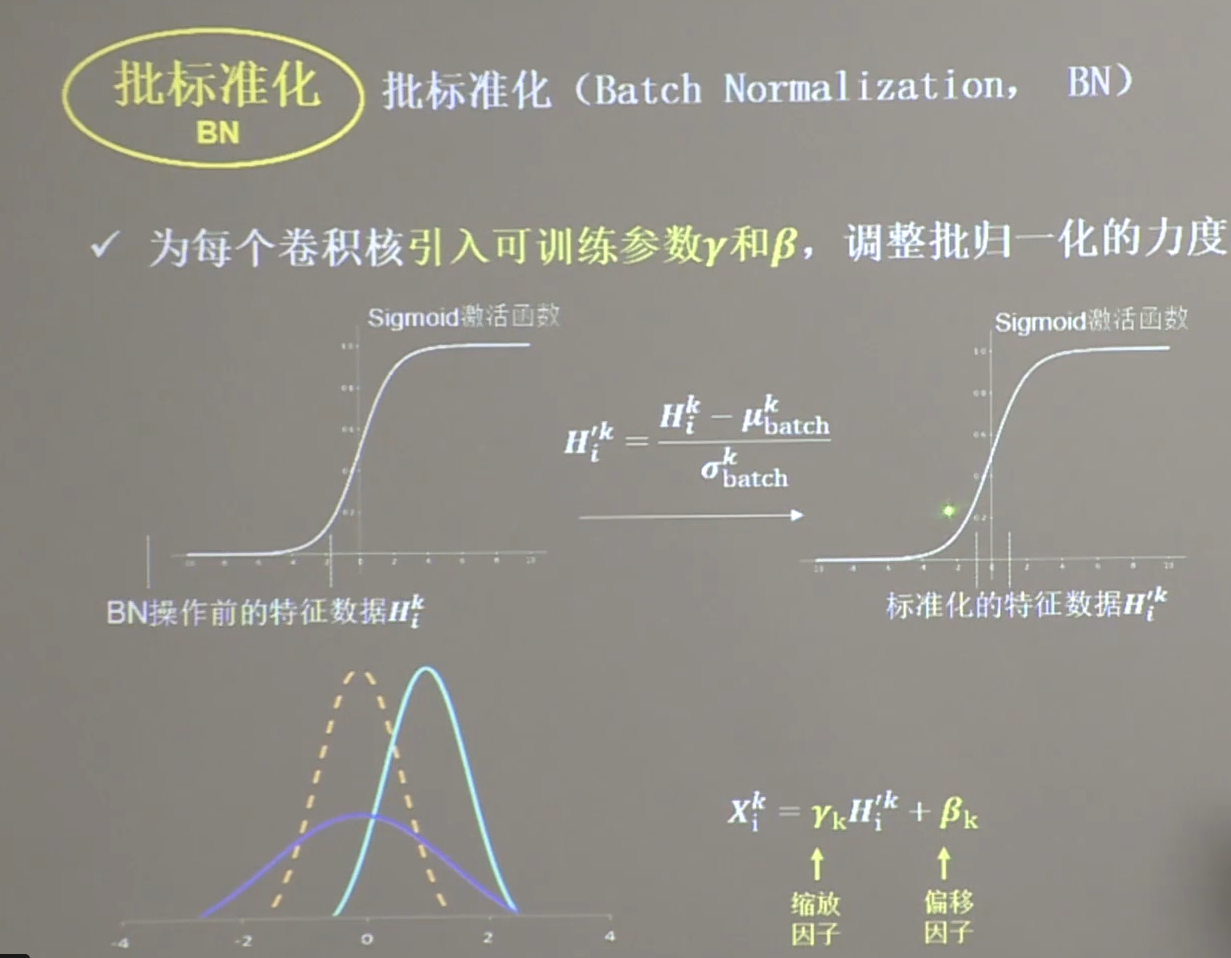
池化
池化用于减少特征数据量
池化方法
- 最大值池化可提取图片纹理
- 均值池化可保证背景特征
TF描述池化:
tf.keras.layers.MaxPool2D(
pool_size = 池化尺寸, # 正方形写核长整数 或(核高h,核宽w)
strides = 池化步长, # 步长整数 或(纵向步长h,横向步长w),默认为pool_size
padding = "valid" or "same" # 默认valid,不使用全零填充
)
tf.keras.layers.AveragePooling2D(
pool_size = 池化尺寸, # 正方形写核长整数 或(核高h,核宽w)
strides = 池化步长, # 步长整数 或(纵向步长h,横向步长w),默认为pool_size
padding = "valid" or "same" # 默认valid,不使用全零填充
)
舍弃
目的:缓解神经网络过拟合
在神经网络训练时,将一部分神经元按照一定概率从神经网络中暂时舍弃。神经网络使用时,被舍弃的神经元恢复链接
TF描述池化:tf.keras.layers.Dropout(舍弃的概率)
卷积神经网络
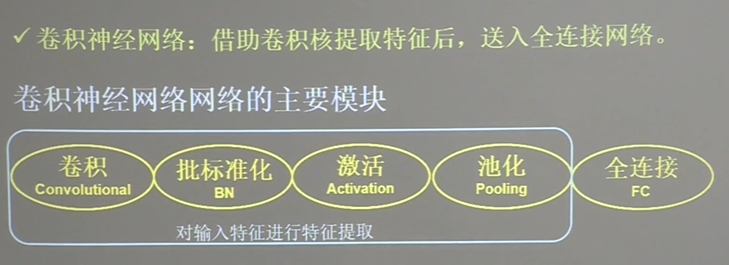
卷积神经网络的主要模块
【卷积(Convolutional) -> 批标准化(BN) -> 激活(Activation) -> 池化(Pooling) ->】-> 全连接(FC)
卷积是什么:卷积就是特征提取器,就是CBAPD
model = tf.keras.models.Sequential([
Conv2D(filters = 6,kernel_size=(5,5),padding='same'),# 卷积层 C
BatchNormalization(),# 批标准化。 BN层 B
Activation('relu'), # 激活层 A
MaxPool2D(pool_size=(2,2),strides=2,padding='same') # 池化层 P
Dropout(0.2), # 舍弃。 dropout层 D
])
Cifar10数据集
提供五万张32 * 32像素点的十分类彩色图片和标签,用于训练
提供一万张32 * 32像素点的十分类彩色图片和标签,用于测试
(每张图片有32行 32列像素点的红绿蓝三通道数据)
导入cifar10数据集
cifar10 = tf.keras.datasets.cifar10
(x_train,y_train),(x_test,y_test) = cifar10.load_data()
完整代码如下:
import tensorflow as tf
from matplotlib import pyplot as plt
import numpy as np
np.set_printoptions(threshold=np.inf)
cifar10 = tf.keras.datasets.cifar10
(x_train, y_train), (x_test, y_test) = cifar10.load_data()
# 可视化训练集输入特征的第一个元素
plt.imshow(x_train[0]) # 绘制图片
plt.show()
# # 打印出训练集输入特征的第一个元素
# print("x_train[0]:\n", x_train[0])
# # 打印出训练集标签的第一个元素
# print("y_train[0]:\n", y_train[0])
# # 打印出整个训练集输入特征形状
# print("x_train.shape:\n", x_train.shape)
# # 打印出整个训练集标签的形状
# print("y_train.shape:\n", y_train.shape)
# # 打印出整个测试集输入特征的形状
# print("x_test.shape:\n", x_test.shape)
# # 打印出整个测试集标签的形状
# print("y_test.shape:\n", y_test.shape)
## 需要查看运行结果自行解除这一大段的注释
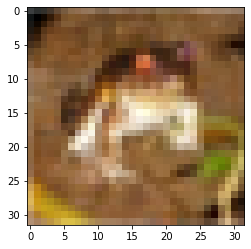
卷积神经网络搭建
·
搭建一个一层卷积,两层全连接的网络
使用5个5X5的卷积核 ( 5*5 conv,filter=6)过2X2的池化核,池化步长是2(2*2 pool,strides=2),过128个神经元的全连接层(Dense 128)
由于cifar10是十分类,因此最后还要过一层十个神经元的全连接层
进行分析,分析思路CBAPD
C (核:6 * 6 * 5 ;步长:1 ;填充:same)
B (Yes) # 意为使用批标准化
A (relu)
P (max;核:2 * 2 ;步长:2 ; 填充:same)
D (0.2) # 把20%的神经元休眠
Flatten
Dense(神经元:128 ; 激活:relu ; Dropout:0.2)
Dense(神经元:10 ; 激活:softmax) # 过softmax函数使输出符合概率分布
代码实现如下:
from tensorflow.keras import Model
class Baseline(Model):
def __init__(self):
super(Baseline, self).__init__()
self.c1 = Conv2D(filters=6, kernel_size=(5, 5), padding='same') # 卷积层
self.b1 = BatchNormalization() # BN层
self.a1 = Activation('relu') # 激活层
self.p1 = MaxPool2D(pool_size=(2, 2), strides=2, padding='same') # 池化层
self.d1 = Dropout(0.2) # dropout层
self.flatten = Flatten() # 拉直
self.f1 = Dense(128, activation='relu')
self.d2 = Dropout(0.2) # 按照20%比例休眠神经元
self.f2 = Dense(10, activation='softmax')
def call(self, x):
x = self.c1(x)
x = self.b1(x)
x = self.a1(x)
x = self.p1(x)
x = self.d1(x)
x = self.flatten(x)
x = self.f1(x)
x = self.d2(x)
y = self.f2(x)
return y
完整代码如下:
import tensorflow as tf
import os
import numpy as np
from matplotlib import pyplot as plt
from tensorflow.keras.layers import Conv2D, BatchNormalization, Activation, MaxPool2D, Dropout, Flatten, Dense
from tensorflow.keras import Model
np.set_printoptions(threshold=np.inf)
cifar10 = tf.keras.datasets.cifar10
(x_train, y_train), (x_test, y_test) = cifar10.load_data()
x_train, x_test = x_train / 255.0, x_test / 255.0
class Baseline(Model):
def __init__(self):
super(Baseline, self).__init__()
self.c1 = Conv2D(filters=6, kernel_size=(5, 5), padding='same') # 卷积层
self.b1 = BatchNormalization() # BN层
self.a1 = Activation('relu') # 激活层
self.p1 = MaxPool2D(pool_size=(2, 2), strides=2, padding='same') # 池化层
self.d1 = Dropout(0.2) # dropout层
self.flatten = Flatten()
self.f1 = Dense(128, activation='relu')
self.d2 = Dropout(0.2)
self.f2 = Dense(10, activation='softmax')
def call(self, x):
x = self.c1(x)
x = self.b1(x)
x = self.a1(x)
x = self.p1(x)
x = self.d1(x)
x = self.flatten(x)
x = self.f1(x)
x = self.d2(x)
y = self.f2(x)
return y
model = Baseline()
model.compile(optimizer='adam',
loss=tf.keras.losses.SparseCategoricalCrossentropy(from_logits=False),
metrics=['sparse_categorical_accuracy'])
checkpoint_save_path = "./checkpoint/Baseline.ckpt"
if os.path.exists(checkpoint_save_path + '.index'):
print('-------------load the model-----------------')
model.load_weights(checkpoint_save_path)
cp_callback = tf.keras.callbacks.ModelCheckpoint(filepath=checkpoint_save_path,
save_weights_only=True,
save_best_only=True)
history = model.fit(x_train, y_train, batch_size=32, epochs=5, validation_data=(x_test, y_test), validation_freq=1,
callbacks=[cp_callback])
model.summary()
# print(model.trainable_variables)
file = open('./weights.txt', 'w')
for v in model.trainable_variables:
file.write(str(v.name) + '\n')
file.write(str(v.shape) + '\n')
file.write(str(v.numpy()) + '\n')
file.close()
############################################### show ###############################################
# 显示训练集和验证集的acc和loss曲线
acc = history.history['sparse_categorical_accuracy']
val_acc = history.history['val_sparse_categorical_accuracy']
loss = history.history['loss']
val_loss = history.history['val_loss']
plt.subplot(1, 2, 1)
plt.plot(acc, label='Training Accuracy')
plt.plot(val_acc, label='Validation Accuracy')
plt.title('Training and Validation Accuracy')
plt.legend()
plt.subplot(1, 2, 2)
plt.plot(loss, label='Training Loss')
plt.plot(val_loss, label='Validation Loss')
plt.title('Training and Validation Loss')
plt.legend()
plt.show()
-------------load the model-----------------
Epoch 1/5
1563/1563 [==============================] - 26s 16ms/step - loss: 1.2335 - sparse_categorical_accuracy: 0.5620 - val_loss: 1.2375 - val_sparse_categorical_accuracy: 0.5685
Epoch 2/5
1563/1563 [==============================] - 24s 15ms/step - loss: 1.2030 - sparse_categorical_accuracy: 0.5734 - val_loss: 1.2196 - val_sparse_categorical_accuracy: 0.5750
Epoch 3/5
1563/1563 [==============================] - 24s 15ms/step - loss: 1.1676 - sparse_categorical_accuracy: 0.5847 - val_loss: 1.2254 - val_sparse_categorical_accuracy: 0.5701
Epoch 4/5
1563/1563 [==============================] - 23s 15ms/step - loss: 1.1474 - sparse_categorical_accuracy: 0.5944 - val_loss: 1.1421 - val_sparse_categorical_accuracy: 0.5985
Epoch 5/5
1563/1563 [==============================] - 24s 15ms/step - loss: 1.1188 - sparse_categorical_accuracy: 0.6034 - val_loss: 1.0880 - val_sparse_categorical_accuracy: 0.6209
Model: "baseline_1"
_________________________________________________________________
Layer (type) Output Shape Param #
=================================================================
conv2d_8 (Conv2D) multiple 456
_________________________________________________________________
batch_normalization_3 (Batch multiple 24
_________________________________________________________________
activation_3 (Activation) multiple 0
_________________________________________________________________
max_pooling2d_6 (MaxPooling2 multiple 0
_________________________________________________________________
dropout_4 (Dropout) multiple 0
_________________________________________________________________
flatten_3 (Flatten) multiple 0
_________________________________________________________________
dense_8 (Dense) multiple 196736
_________________________________________________________________
dropout_5 (Dropout) multiple 0
_________________________________________________________________
dense_9 (Dense) multiple 1290
=================================================================
Total params: 198,506
Trainable params: 198,494
Non-trainable params: 12
_________________________________________________________________
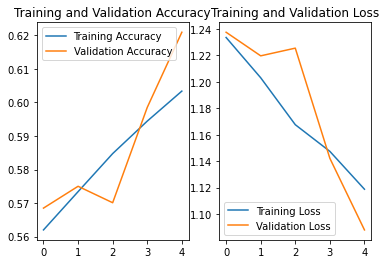
经典卷积网络
下面使用六步法,分别实现LeNET、AlexNet,VGGNet,INceptionNet和ResNet卷积神经网络
LetNet
由Yann LeCun 于1998年提出,卷积网络的开篇之作
特点:通过共享卷积核减少了网络的参数
import tensorflow as tf
import os
import numpy as np
from matplotlib import pyplot as plt
from tensorflow.keras.layers import Conv2D, BatchNormalization, Activation, MaxPool2D, Dropout, Flatten, Dense
from tensorflow.keras import Model
np.set_printoptions(threshold=np.inf)
cifar10 = tf.keras.datasets.cifar10
(x_train, y_train), (x_test, y_test) = cifar10.load_data()
x_train, x_test = x_train / 255.0, x_test / 255.0
class LeNet5(Model):
def __init__(self):
super(LeNet5, self).__init__()
self.c1 = Conv2D(filters=6, kernel_size=(5, 5),
activation='sigmoid')
self.p1 = MaxPool2D(pool_size=(2, 2), strides=2)
self.c2 = Conv2D(filters=16, kernel_size=(5, 5),
activation='sigmoid')
self.p2 = MaxPool2D(pool_size=(2, 2), strides=2)
self.flatten = Flatten()
self.f1 = Dense(120, activation='sigmoid')
self.f2 = Dense(84, activation='sigmoid')
self.f3 = Dense(10, activation='softmax')
def call(self, x):
x = self.c1(x)
x = self.p1(x)
x = self.c2(x)
x = self.p2(x)
x = self.flatten(x)
x = self.f1(x)
x = self.f2(x)
y = self.f3(x)
return y
model = LeNet5()
model.compile(optimizer='adam',
loss=tf.keras.losses.SparseCategoricalCrossentropy(from_logits=False),
metrics=['sparse_categorical_accuracy'])
checkpoint_save_path = "./checkpoint/LeNet5.ckpt"
if os.path.exists(checkpoint_save_path + '.index'):
print('-------------load the model-----------------')
model.load_weights(checkpoint_save_path)
cp_callback = tf.keras.callbacks.ModelCheckpoint(filepath=checkpoint_save_path,
save_weights_only=True,
save_best_only=True)
history = model.fit(x_train, y_train, batch_size=32, epochs=5, validation_data=(x_test, y_test), validation_freq=1,
callbacks=[cp_callback])
model.summary()
# print(model.trainable_variables)
file = open('./weights.txt', 'w')
for v in model.trainable_variables:
file.write(str(v.name) + '\n')
file.write(str(v.shape) + '\n')
file.write(str(v.numpy()) + '\n')
file.close()
############################################### show ###############################################
# 显示训练集和验证集的acc和loss曲线
acc = history.history['sparse_categorical_accuracy']
val_acc = history.history['val_sparse_categorical_accuracy']
loss = history.history['loss']
val_loss = history.history['val_loss']
plt.subplot(1, 2, 1)
plt.plot(acc, label='Training Accuracy')
plt.plot(val_acc, label='Validation Accuracy')
plt.title('Training and Validation Accuracy')
plt.legend()
plt.subplot(1, 2, 2)
plt.plot(loss, label='Training Loss')
plt.plot(val_loss, label='Validation Loss')
plt.title('Training and Validation Loss')
plt.legend()
plt.show()
-------------load the model-----------------
Epoch 1/5
1563/1563 [==============================] - 14s 9ms/step - loss: 1.4006 - sparse_categorical_accuracy: 0.4928 - val_loss: 1.4194 - val_sparse_categorical_accuracy: 0.4890
Epoch 2/5
1563/1563 [==============================] - 14s 9ms/step - loss: 1.3587 - sparse_categorical_accuracy: 0.5080 - val_loss: 1.3741 - val_sparse_categorical_accuracy: 0.5016
Epoch 3/5
1563/1563 [==============================] - 14s 9ms/step - loss: 1.3173 - sparse_categorical_accuracy: 0.5259 - val_loss: 1.3523 - val_sparse_categorical_accuracy: 0.5183
Epoch 4/5
1563/1563 [==============================] - 14s 9ms/step - loss: 1.2885 - sparse_categorical_accuracy: 0.5388 - val_loss: 1.3057 - val_sparse_categorical_accuracy: 0.5287
Epoch 5/5
1563/1563 [==============================] - 15s 10ms/step - loss: 1.2573 - sparse_categorical_accuracy: 0.5479 - val_loss: 1.2753 - val_sparse_categorical_accuracy: 0.5411
Model: "le_net5_1"
_________________________________________________________________
Layer (type) Output Shape Param #
=================================================================
conv2d_9 (Conv2D) multiple 456
_________________________________________________________________
max_pooling2d_7 (MaxPooling2 multiple 0
_________________________________________________________________
conv2d_10 (Conv2D) multiple 2416
_________________________________________________________________
max_pooling2d_8 (MaxPooling2 multiple 0
_________________________________________________________________
flatten_4 (Flatten) multiple 0
_________________________________________________________________
dense_10 (Dense) multiple 48120
_________________________________________________________________
dense_11 (Dense) multiple 10164
_________________________________________________________________
dense_12 (Dense) multiple 850
=================================================================
Total params: 62,006
Trainable params: 62,006
Non-trainable params: 0
_________________________________________________________________
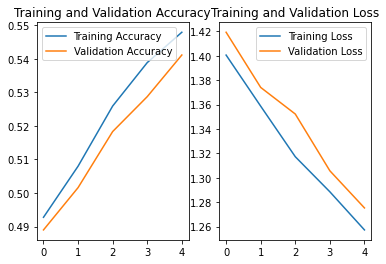
AlexNet
Alex网络诞生于2012年,当年ImageNet竞赛冠军,Top5错误率为16.4%
AlexNet使用了激活函数relu,提升了训练速度,使用Dropout缓解了过拟合
import tensorflow as tf
import os
import numpy as np
from matplotlib import pyplot as plt
from tensorflow.keras.layers import Conv2D, BatchNormalization, Activation, MaxPool2D, Dropout, Flatten, Dense
from tensorflow.keras import Model
np.set_printoptions(threshold=np.inf)
cifar10 = tf.keras.datasets.cifar10
(x_train, y_train), (x_test, y_test) = cifar10.load_data()
x_train, x_test = x_train / 255.0, x_test / 255.0
class AlexNet8(Model):
def __init__(self):
super(AlexNet8, self).__init__()
self.c1 = Conv2D(filters=96, kernel_size=(3, 3))
self.b1 = BatchNormalization()
self.a1 = Activation('relu')
self.p1 = MaxPool2D(pool_size=(3, 3), strides=2)
self.c2 = Conv2D(filters=256, kernel_size=(3, 3))
self.b2 = BatchNormalization()
self.a2 = Activation('relu')
self.p2 = MaxPool2D(pool_size=(3, 3), strides=2)
self.c3 = Conv2D(filters=384, kernel_size=(3, 3), padding='same',
activation='relu')
self.c4 = Conv2D(filters=384, kernel_size=(3, 3), padding='same',
activation='relu')
self.c5 = Conv2D(filters=256, kernel_size=(3, 3), padding='same',
activation='relu')
self.p3 = MaxPool2D(pool_size=(3, 3), strides=2)
self.flatten = Flatten()
self.f1 = Dense(2048, activation='relu')
self.d1 = Dropout(0.5)
self.f2 = Dense(2048, activation='relu')
self.d2 = Dropout(0.5)
self.f3 = Dense(10, activation='softmax')
def call(self, x):
x = self.c1(x)
x = self.b1(x)
x = self.a1(x)
x = self.p1(x)
x = self.c2(x)
x = self.b2(x)
x = self.a2(x)
x = self.p2(x)
x = self.c3(x)
x = self.c4(x)
x = self.c5(x)
x = self.p3(x)
x = self.flatten(x)
x = self.f1(x)
x = self.d1(x)
x = self.f2(x)
x = self.d2(x)
y = self.f3(x)
return y
model = AlexNet8()
model.compile(optimizer='adam',
loss=tf.keras.losses.SparseCategoricalCrossentropy(from_logits=False),
metrics=['sparse_categorical_accuracy'])
checkpoint_save_path = "./checkpoint/AlexNet8.ckpt"
if os.path.exists(checkpoint_save_path + '.index'):
print('-------------load the model-----------------')
model.load_weights(checkpoint_save_path)
cp_callback = tf.keras.callbacks.ModelCheckpoint(filepath=checkpoint_save_path,
save_weights_only=True,
save_best_only=True)
history = model.fit(x_train, y_train, batch_size=32, epochs=5, validation_data=(x_test, y_test), validation_freq=1,
callbacks=[cp_callback])
model.summary()
# print(model.trainable_variables)
file = open('./weights.txt', 'w')
for v in model.trainable_variables:
file.write(str(v.name) + '\n')
file.write(str(v.shape) + '\n')
file.write(str(v.numpy()) + '\n')
file.close()
############################################### show ###############################################
# 显示训练集和验证集的acc和loss曲线
acc = history.history['sparse_categorical_accuracy']
val_acc = history.history['val_sparse_categorical_accuracy']
loss = history.history['loss']
val_loss = history.history['val_loss']
plt.subplot(1, 2, 1)
plt.plot(acc, label='Training Accuracy')
plt.plot(val_acc, label='Validation Accuracy')
plt.title('Training and Validation Accuracy')
plt.legend()
plt.subplot(1, 2, 2)
plt.plot(loss, label='Training Loss')
plt.plot(val_loss, label='Validation Loss')
plt.title('Training and Validation Loss')
plt.legend()
plt.show()
-------------load the model-----------------
Epoch 1/5
1563/1563 [==============================] - 356s 228ms/step - loss: 1.0504 - sparse_categorical_accuracy: 0.6369 - val_loss: 1.1432 - val_sparse_categorical_accuracy: 0.6150
Epoch 2/5
1563/1563 [==============================] - 389s 249ms/step - loss: 0.9855 - sparse_categorical_accuracy: 0.6604 - val_loss: 1.1803 - val_sparse_categorical_accuracy: 0.5829
Epoch 3/5
1563/1563 [==============================] - 337s 215ms/step - loss: 0.9361 - sparse_categorical_accuracy: 0.6803 - val_loss: 1.2742 - val_sparse_categorical_accuracy: 0.5517
Epoch 4/5
1563/1563 [==============================] - 325s 208ms/step - loss: 0.8906 - sparse_categorical_accuracy: 0.6949 - val_loss: 1.0693 - val_sparse_categorical_accuracy: 0.6268
Epoch 5/5
1563/1563 [==============================] - 332s 212ms/step - loss: 0.8532 - sparse_categorical_accuracy: 0.7078 - val_loss: 1.2640 - val_sparse_categorical_accuracy: 0.5811
Model: "alex_net8_1"
_________________________________________________________________
Layer (type) Output Shape Param #
=================================================================
conv2d_11 (Conv2D) multiple 2688
_________________________________________________________________
batch_normalization_4 (Batch multiple 384
_________________________________________________________________
activation_4 (Activation) multiple 0
_________________________________________________________________
max_pooling2d_9 (MaxPooling2 multiple 0
_________________________________________________________________
conv2d_12 (Conv2D) multiple 221440
_________________________________________________________________
batch_normalization_5 (Batch multiple 1024
_________________________________________________________________
activation_5 (Activation) multiple 0
_________________________________________________________________
max_pooling2d_10 (MaxPooling multiple 0
_________________________________________________________________
conv2d_13 (Conv2D) multiple 885120
_________________________________________________________________
conv2d_14 (Conv2D) multiple 1327488
_________________________________________________________________
conv2d_15 (Conv2D) multiple 884992
_________________________________________________________________
max_pooling2d_11 (MaxPooling multiple 0
_________________________________________________________________
flatten_5 (Flatten) multiple 0
_________________________________________________________________
dense_13 (Dense) multiple 2099200
_________________________________________________________________
dropout_6 (Dropout) multiple 0
_________________________________________________________________
dense_14 (Dense) multiple 4196352
_________________________________________________________________
dropout_7 (Dropout) multiple 0
_________________________________________________________________
dense_15 (Dense) multiple 20490
=================================================================
Total params: 9,639,178
Trainable params: 9,638,474
Non-trainable params: 704
_________________________________________________________________
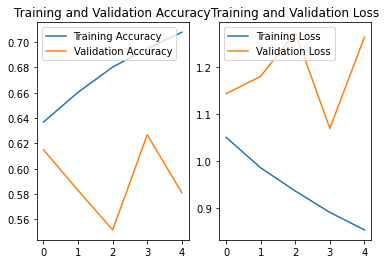
VGGNet
诞生于2014年,当年ImageNet竞赛冠军,Top5错误率减小到7.3%
使用了VGG卷积核,在减少了参数的同时提高之别准确率
import tensorflow as tf
import os
import numpy as np
from matplotlib import pyplot as plt
from tensorflow.keras.layers import Conv2D, BatchNormalization, Activation, MaxPool2D, Dropout, Flatten, Dense
from tensorflow.keras import Model
np.set_printoptions(threshold=np.inf)
cifar10 = tf.keras.datasets.cifar10
(x_train, y_train), (x_test, y_test) = cifar10.load_data()
x_train, x_test = x_train / 255.0, x_test / 255.0
class AlexNet8(Model):
def __init__(self):
super(AlexNet8, self).__init__()
self.c1 = Conv2D(filters=96, kernel_size=(3, 3))
self.b1 = BatchNormalization()
self.a1 = Activation('relu')
self.p1 = MaxPool2D(pool_size=(3, 3), strides=2)
self.c2 = Conv2D(filters=256, kernel_size=(3, 3))
self.b2 = BatchNormalization()
self.a2 = Activation('relu')
self.p2 = MaxPool2D(pool_size=(3, 3), strides=2)
self.c3 = Conv2D(filters=384, kernel_size=(3, 3), padding='same',
activation='relu')
self.c4 = Conv2D(filters=384, kernel_size=(3, 3), padding='same',
activation='relu')
self.c5 = Conv2D(filters=256, kernel_size=(3, 3), padding='same',
activation='relu')
self.p3 = MaxPool2D(pool_size=(3, 3), strides=2)
self.flatten = Flatten()
self.f1 = Dense(2048, activation='relu')
self.d1 = Dropout(0.5)
self.f2 = Dense(2048, activation='relu')
self.d2 = Dropout(0.5)
self.f3 = Dense(10, activation='softmax')
def call(self, x):
x = self.c1(x)
x = self.b1(x)
x = self.a1(x)
x = self.p1(x)
x = self.c2(x)
x = self.b2(x)
x = self.a2(x)
x = self.p2(x)
x = self.c3(x)
x = self.c4(x)
x = self.c5(x)
x = self.p3(x)
x = self.flatten(x)
x = self.f1(x)
x = self.d1(x)
x = self.f2(x)
x = self.d2(x)
y = self.f3(x)
return y
model = AlexNet8()
model.compile(optimizer='adam',
loss=tf.keras.losses.SparseCategoricalCrossentropy(from_logits=False),
metrics=['sparse_categorical_accuracy'])
checkpoint_save_path = "./checkpoint/AlexNet8.ckpt"
if os.path.exists(checkpoint_save_path + '.index'):
print('-------------load the model-----------------')
model.load_weights(checkpoint_save_path)
cp_callback = tf.keras.callbacks.ModelCheckpoint(filepath=checkpoint_save_path,
save_weights_only=True,
save_best_only=True)
history = model.fit(x_train, y_train, batch_size=32, epochs=5, validation_data=(x_test, y_test), validation_freq=1,
callbacks=[cp_callback])
model.summary()
# print(model.trainable_variables)
file = open('./weights.txt', 'w')
for v in model.trainable_variables:
file.write(str(v.name) + '\n')
file.write(str(v.shape) + '\n')
file.write(str(v.numpy()) + '\n')
file.close()
############################################### show ###############################################
# 显示训练集和验证集的acc和loss曲线
acc = history.history['sparse_categorical_accuracy']
val_acc = history.history['val_sparse_categorical_accuracy']
loss = history.history['loss']
val_loss = history.history['val_loss']
plt.subplot(1, 2, 1)
plt.plot(acc, label='Training Accuracy')
plt.plot(val_acc, label='Validation Accuracy')
plt.title('Training and Validation Accuracy')
plt.legend()
plt.subplot(1, 2, 2)
plt.plot(loss, label='Training Loss')
plt.plot(val_loss, label='Validation Loss')
plt.title('Training and Validation Loss')
plt.legend()
plt.show()
-------------load the model-----------------
Epoch 1/5
179/1563 [==>...........................] - ETA: 4:14 - loss: 0.8443 - sparse_categorical_accuracy: 0.7139
InceptionNet
诞生于2014年,当年ImageNet竞赛冠军,Top5错误率为6.67%
引入了Inception结构块,在同一网络内使用不同尺寸的卷积核,提升模型感知力
使用了批标准化,缓解了梯度消失
import tensorflow as tf
import os
import numpy as np
from matplotlib import pyplot as plt
from tensorflow.keras.layers import Conv2D, BatchNormalization, Activation, MaxPool2D, Dropout, Flatten, Dense, \
GlobalAveragePooling2D
from tensorflow.keras import Model
np.set_printoptions(threshold=np.inf)
cifar10 = tf.keras.datasets.cifar10
(x_train, y_train), (x_test, y_test) = cifar10.load_data()
x_train, x_test = x_train / 255.0, x_test / 255.0
class ConvBNRelu(Model):
def __init__(self, ch, kernelsz=3, strides=1, padding='same'):
super(ConvBNRelu, self).__init__()
self.model = tf.keras.models.Sequential([
Conv2D(ch, kernelsz, strides=strides, padding=padding),
BatchNormalization(),
Activation('relu')
])
def call(self, x):
x = self.model(x, training=False) #在training=False时,BN通过整个训练集计算均值、方差去做批归一化,training=True时,通过当前batch的均值、方差去做批归一化。推理时 training=False效果好
return x
class InceptionBlk(Model):
def __init__(self, ch, strides=1):
super(InceptionBlk, self).__init__()
self.ch = ch
self.strides = strides
self.c1 = ConvBNRelu(ch, kernelsz=1, strides=strides)
self.c2_1 = ConvBNRelu(ch, kernelsz=1, strides=strides)
self.c2_2 = ConvBNRelu(ch, kernelsz=3, strides=1)
self.c3_1 = ConvBNRelu(ch, kernelsz=1, strides=strides)
self.c3_2 = ConvBNRelu(ch, kernelsz=5, strides=1)
self.p4_1 = MaxPool2D(3, strides=1, padding='same')
self.c4_2 = ConvBNRelu(ch, kernelsz=1, strides=strides)
def call(self, x):
x1 = self.c1(x)
x2_1 = self.c2_1(x)
x2_2 = self.c2_2(x2_1)
x3_1 = self.c3_1(x)
x3_2 = self.c3_2(x3_1)
x4_1 = self.p4_1(x)
x4_2 = self.c4_2(x4_1)
# concat along axis=channel
x = tf.concat([x1, x2_2, x3_2, x4_2], axis=3)
return x
class Inception10(Model):
def __init__(self, num_blocks, num_classes, init_ch=16, **kwargs):
super(Inception10, self).__init__(**kwargs)
self.in_channels = init_ch
self.out_channels = init_ch
self.num_blocks = num_blocks
self.init_ch = init_ch
self.c1 = ConvBNRelu(init_ch)
self.blocks = tf.keras.models.Sequential()
for block_id in range(num_blocks):
for layer_id in range(2):
if layer_id == 0:
block = InceptionBlk(self.out_channels, strides=2)
else:
block = InceptionBlk(self.out_channels, strides=1)
self.blocks.add(block)
# enlarger out_channels per block
self.out_channels *= 2
self.p1 = GlobalAveragePooling2D()
self.f1 = Dense(num_classes, activation='softmax')
def call(self, x):
x = self.c1(x)
x = self.blocks(x)
x = self.p1(x)
y = self.f1(x)
return y
model = Inception10(num_blocks=2, num_classes=10)
model.compile(optimizer='adam',
loss=tf.keras.losses.SparseCategoricalCrossentropy(from_logits=False),
metrics=['sparse_categorical_accuracy'])
checkpoint_save_path = "./checkpoint/Inception10.ckpt"
if os.path.exists(checkpoint_save_path + '.index'):
print('-------------load the model-----------------')
model.load_weights(checkpoint_save_path)
cp_callback = tf.keras.callbacks.ModelCheckpoint(filepath=checkpoint_save_path,
save_weights_only=True,
save_best_only=True)
history = model.fit(x_train, y_train, batch_size=32, epochs=5, validation_data=(x_test, y_test), validation_freq=1,
callbacks=[cp_callback])
model.summary()
# print(model.trainable_variables)
file = open('./weights.txt', 'w')
for v in model.trainable_variables:
file.write(str(v.name) + '\n')
file.write(str(v.shape) + '\n')
file.write(str(v.numpy()) + '\n')
file.close()
############################################### show ###############################################
# 显示训练集和验证集的acc和loss曲线
acc = history.history['sparse_categorical_accuracy']
val_acc = history.history['val_sparse_categorical_accuracy']
loss = history.history['loss']
val_loss = history.history['val_loss']
plt.subplot(1, 2, 1)
plt.plot(acc, label='Training Accuracy')
plt.plot(val_acc, label='Validation Accuracy')
plt.title('Training and Validation Accuracy')
plt.legend()
plt.subplot(1, 2, 2)
plt.plot(loss, label='Training Loss')
plt.plot(val_loss, label='Validation Loss')
plt.title('Training and Validation Loss')
plt.legend()
plt.show()
ResNet
诞生于2015年,当年ImageNet竞赛冠军,Top5错误率为3.57%
ResNet提出了层间残差跳连,引入前方信息,缓解梯度消失,使神经网络层数增加成为可能。
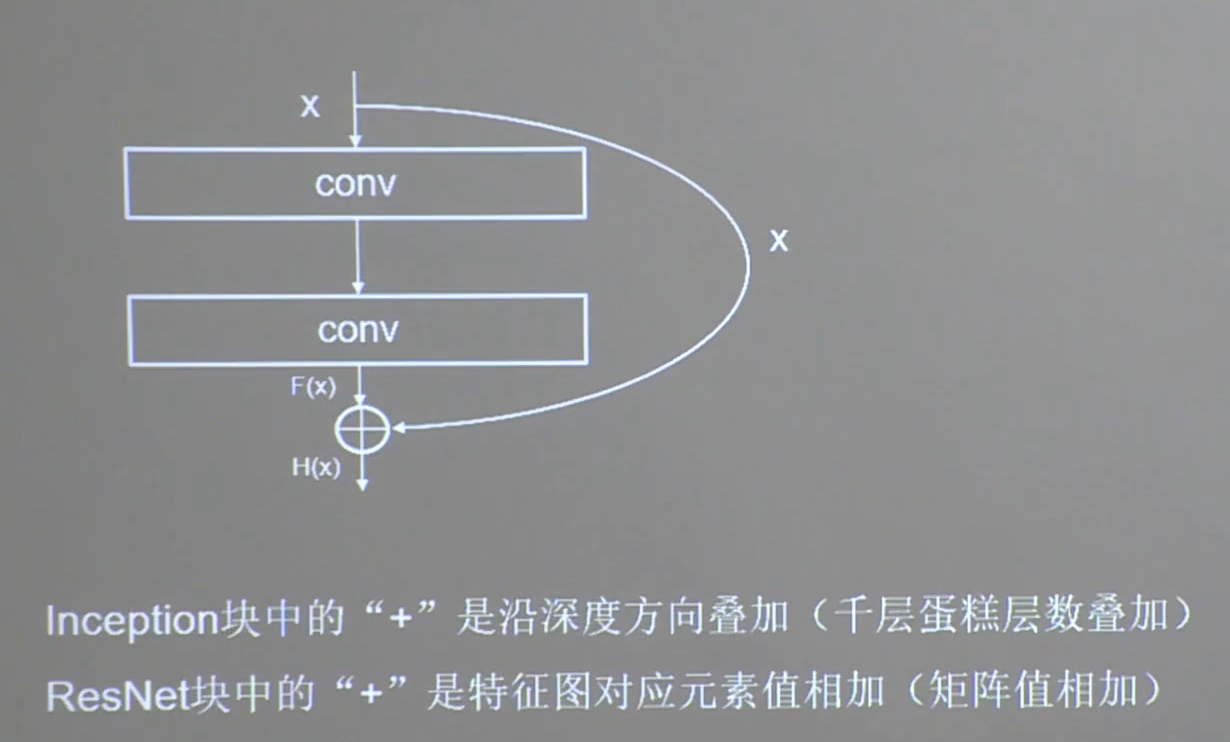
有效缓解神经网络模型堆叠造成退化的问题,使得神经网络可以向更深层次发展
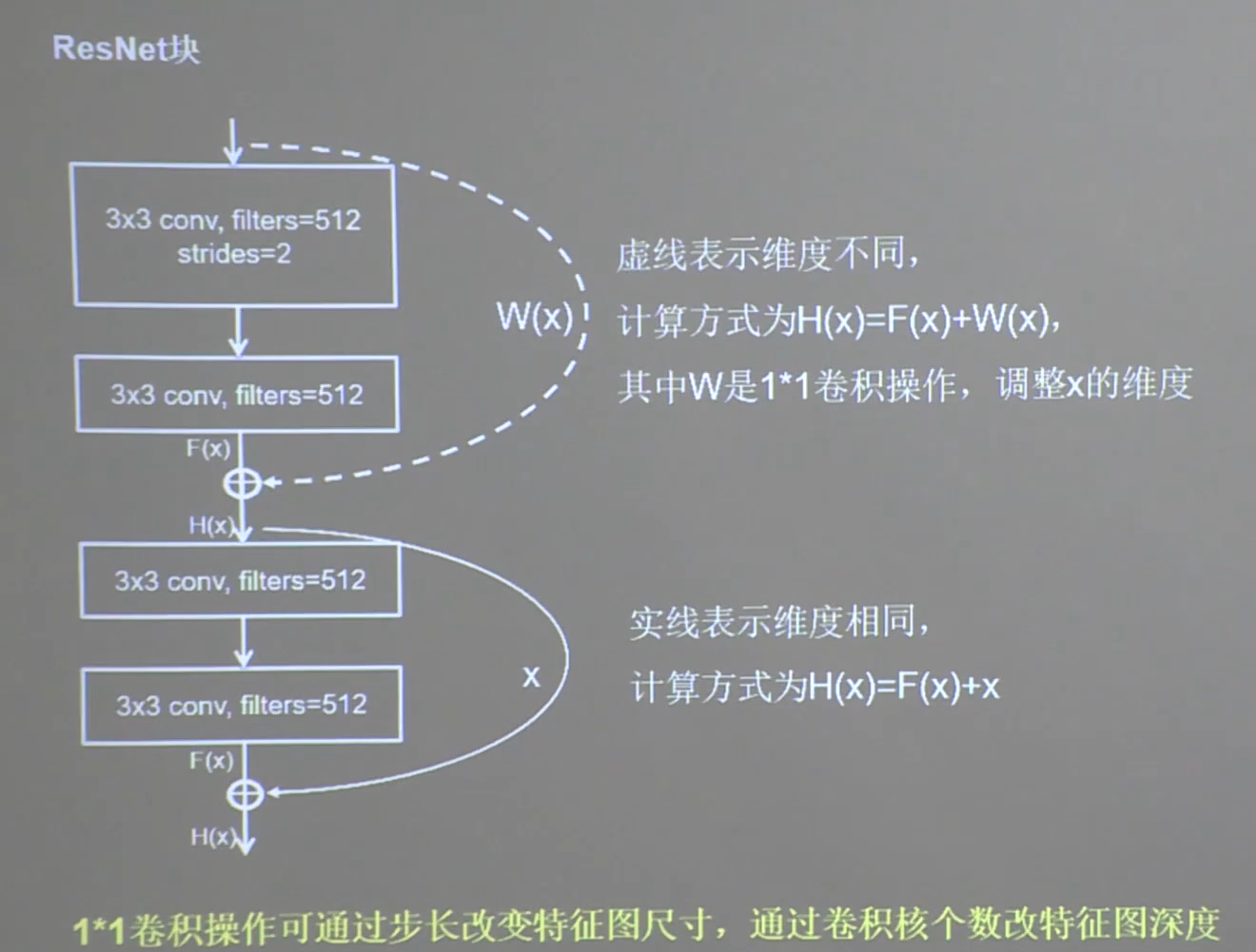
import tensorflow as tf
import os
import numpy as np
from matplotlib import pyplot as plt
from tensorflow.keras.layers import Conv2D, BatchNormalization, Activation, MaxPool2D, Dropout, Flatten, Dense
from tensorflow.keras import Model
np.set_printoptions(threshold=np.inf)
cifar10 = tf.keras.datasets.cifar10
(x_train, y_train), (x_test, y_test) = cifar10.load_data()
x_train, x_test = x_train / 255.0, x_test / 255.0
class ResnetBlock(Model):
def __init__(self, filters, strides=1, residual_path=False):
super(ResnetBlock, self).__init__()
self.filters = filters
self.strides = strides
self.residual_path = residual_path
self.c1 = Conv2D(filters, (3, 3), strides=strides, padding='same', use_bias=False)
self.b1 = BatchNormalization()
self.a1 = Activation('relu')
self.c2 = Conv2D(filters, (3, 3), strides=1, padding='same', use_bias=False)
self.b2 = BatchNormalization()
# residual_path为True时,对输入进行下采样,即用1x1的卷积核做卷积操作,保证x能和F(x)维度相同,顺利相加
if residual_path:
self.down_c1 = Conv2D(filters, (1, 1), strides=strides, padding='same', use_bias=False)
self.down_b1 = BatchNormalization()
self.a2 = Activation('relu')
def call(self, inputs):
residual = inputs # residual等于输入值本身,即residual=x
# 将输入通过卷积、BN层、激活层,计算F(x)
x = self.c1(inputs)
x = self.b1(x)
x = self.a1(x)
x = self.c2(x)
y = self.b2(x)
if self.residual_path:
residual = self.down_c1(inputs)
residual = self.down_b1(residual)
out = self.a2(y + residual) # 最后输出的是两部分的和,即F(x)+x或F(x)+Wx,再过激活函数
return out
class ResNet18(Model):
def __init__(self, block_list, initial_filters=64): # block_list表示每个block有几个卷积层
super(ResNet18, self).__init__()
self.num_blocks = len(block_list) # 共有几个block
self.block_list = block_list
self.out_filters = initial_filters
self.c1 = Conv2D(self.out_filters, (3, 3), strides=1, padding='same', use_bias=False)
self.b1 = BatchNormalization()
self.a1 = Activation('relu')
self.blocks = tf.keras.models.Sequential()
# 构建ResNet网络结构
for block_id in range(len(block_list)): # 第几个resnet block
for layer_id in range(block_list[block_id]): # 第几个卷积层
if block_id != 0 and layer_id == 0: # 对除第一个block以外的每个block的输入进行下采样
block = ResnetBlock(self.out_filters, strides=2, residual_path=True)
else:
block = ResnetBlock(self.out_filters, residual_path=False)
self.blocks.add(block) # 将构建好的block加入resnet
self.out_filters *= 2 # 下一个block的卷积核数是上一个block的2倍
self.p1 = tf.keras.layers.GlobalAveragePooling2D()
self.f1 = tf.keras.layers.Dense(10, activation='softmax', kernel_regularizer=tf.keras.regularizers.l2())
def call(self, inputs):
x = self.c1(inputs)
x = self.b1(x)
x = self.a1(x)
x = self.blocks(x)
x = self.p1(x)
y = self.f1(x)
return y
model = ResNet18([2, 2, 2, 2])
model.compile(optimizer='adam',
loss=tf.keras.losses.SparseCategoricalCrossentropy(from_logits=False),
metrics=['sparse_categorical_accuracy'])
checkpoint_save_path = "./checkpoint/ResNet18.ckpt"
if os.path.exists(checkpoint_save_path + '.index'):
print('-------------load the model-----------------')
model.load_weights(checkpoint_save_path)
cp_callback = tf.keras.callbacks.ModelCheckpoint(filepath=checkpoint_save_path,
save_weights_only=True,
save_best_only=True)
history = model.fit(x_train, y_train, batch_size=32, epochs=5, validation_data=(x_test, y_test), validation_freq=1,
callbacks=[cp_callback])
model.summary()
# print(model.trainable_variables)
file = open('./weights.txt', 'w')
for v in model.trainable_variables:
file.write(str(v.name) + '\n')
file.write(str(v.shape) + '\n')
file.write(str(v.numpy()) + '\n')
file.close()
############################################### show ###############################################
# 显示训练集和验证集的acc和loss曲线
acc = history.history['sparse_categorical_accuracy']
val_acc = history.history['val_sparse_categorical_accuracy']
loss = history.history['loss']
val_loss = history.history['val_loss']
plt.subplot(1, 2, 1)
plt.plot(acc, label='Training Accuracy')
plt.plot(val_acc, label='Validation Accuracy')
plt.title('Training and Validation Accuracy')
plt.legend()
plt.subplot(1, 2, 2)
plt.plot(loss, label='Training Loss')
plt.plot(val_loss, label='Validation Loss')
plt.title('Training and Validation Loss')
plt.legend()
plt.show()
经典卷积网络总结
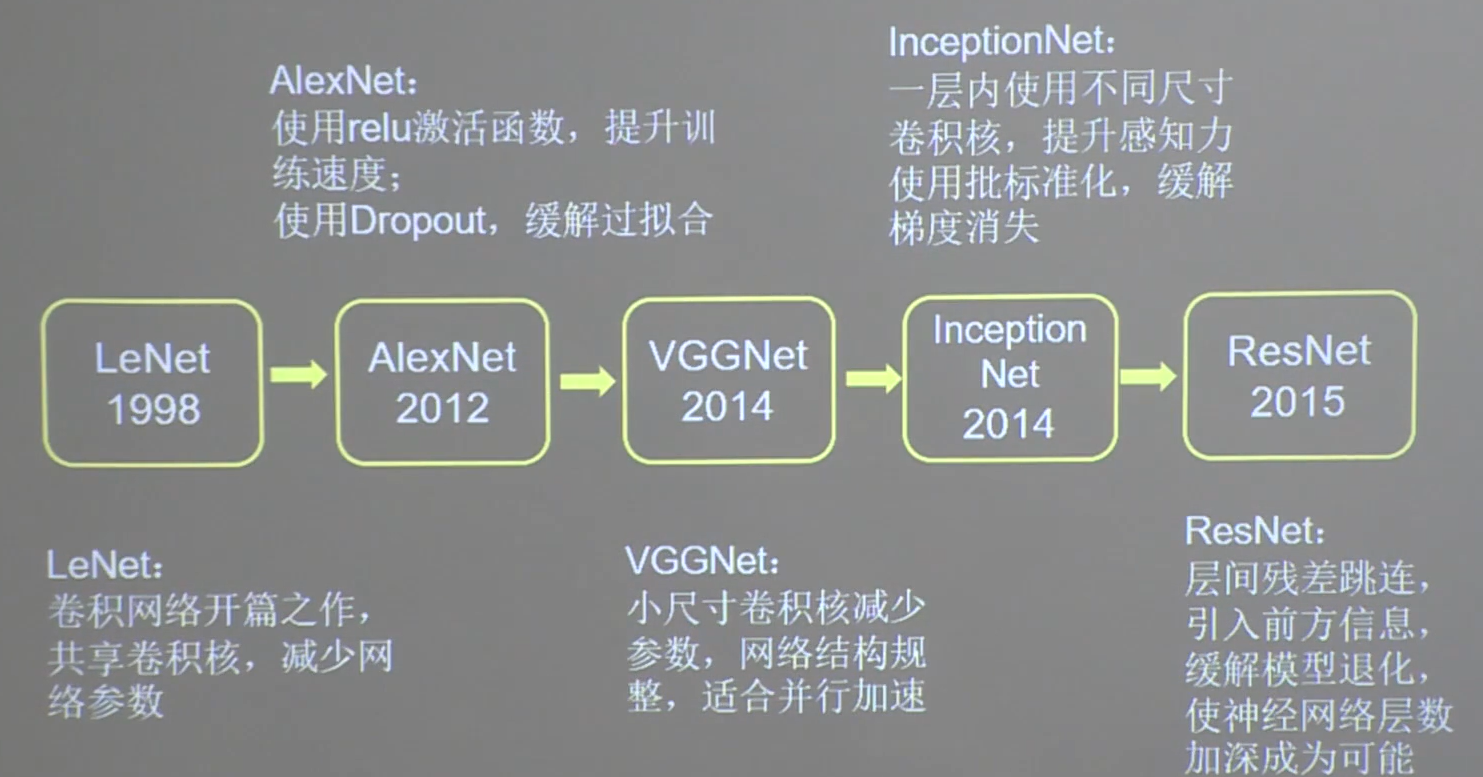






【推荐】国内首个AI IDE,深度理解中文开发场景,立即下载体验Trae
【推荐】编程新体验,更懂你的AI,立即体验豆包MarsCode编程助手
【推荐】抖音旗下AI助手豆包,你的智能百科全书,全免费不限次数
【推荐】轻量又高性能的 SSH 工具 IShell:AI 加持,快人一步